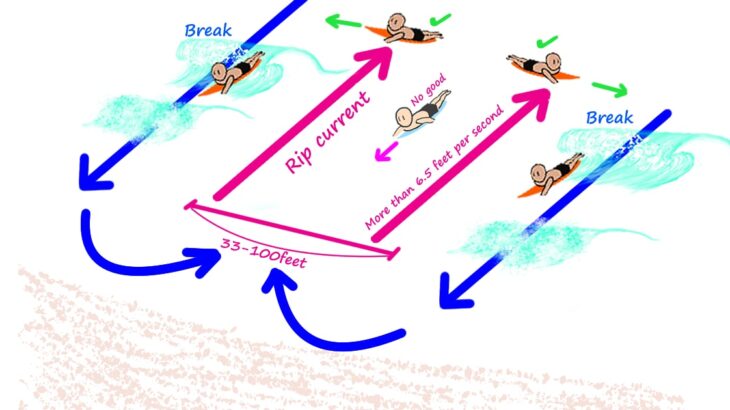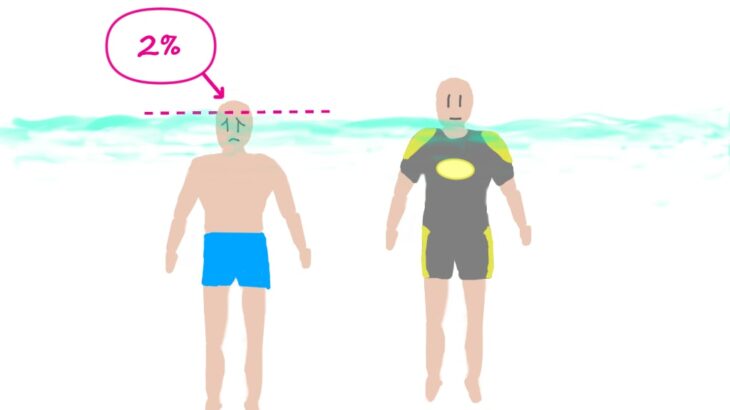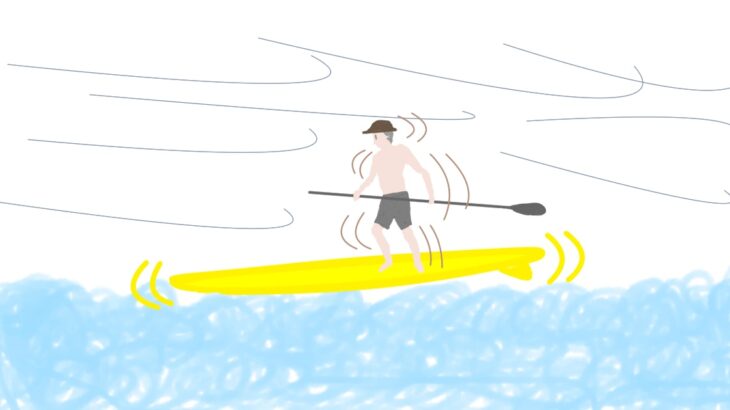
The Rip current was strong today. I was about to be washed off the coast. I managed to get back to land …
The power of the waves was strong today, and the Rip current was also strong.
It is common for people to be swept away by Rip current and die. This time, I will talk about Rip current.

・ What is Rip current?
・Example of how to find Rip current
・ What you should do to prevent you from being swept away by Rip current
・How to escape from Rip current
・When it is swept by the rip current and cannot be returned
What is Rip current?
Rip current is a flow from the shore to the offshore.
The waves come from offshore to the shore. The waves break in shallow places. After the waves break, it becomes a stream of water, hits the shore, turns, and returns offshore through deep seabeds.
This current is very dangerous. There is an accident in which surfers and bathers are washed away and cannot return, resulting in death.
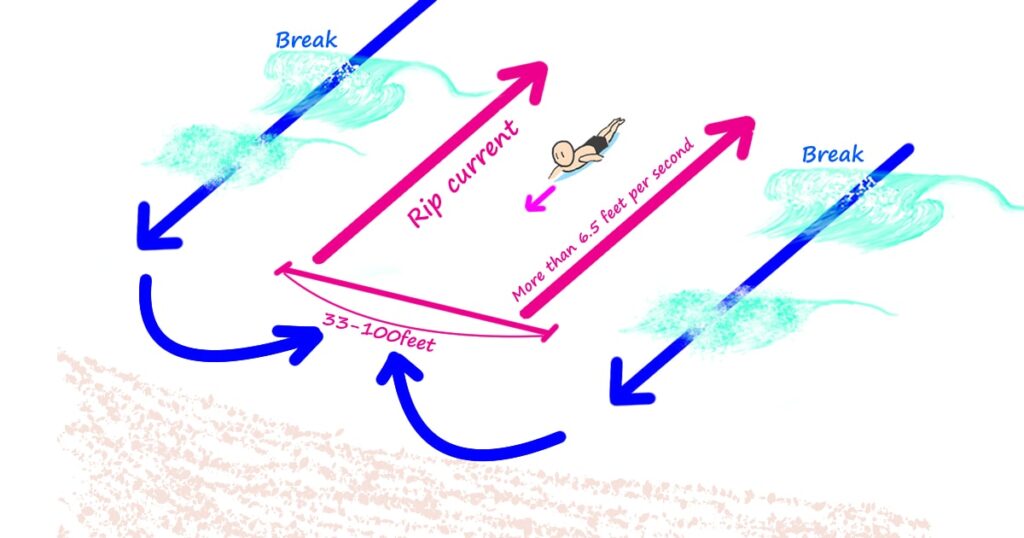
The current speed can be 6.5 feet or more per second, depending on the conditions at the time. It’s a tremendous speed. You can’t paddle faster than this stream.
Also, the current width will be about 33 to 100 feet, depending on the conditions at that time. Depending on the surf spot, there may be a wider current.
Basically, the larger the wave size, the larger the amount of seawater that moves, and the stronger the current.
Since waves and currents are created by nature, there are cases that humans cannot imagine, so be careful.
Rip current is likely to occur in the following places.
・ Coast facing the open ocean
・ Shallow and long coastline
・ The coast where the waves come at right angles to the coast
In addition, Rip current is likely to occur near obstacles such as the side of an embankment. Below is an image of the surfing venue for the 2020 Tokyo Olympics.
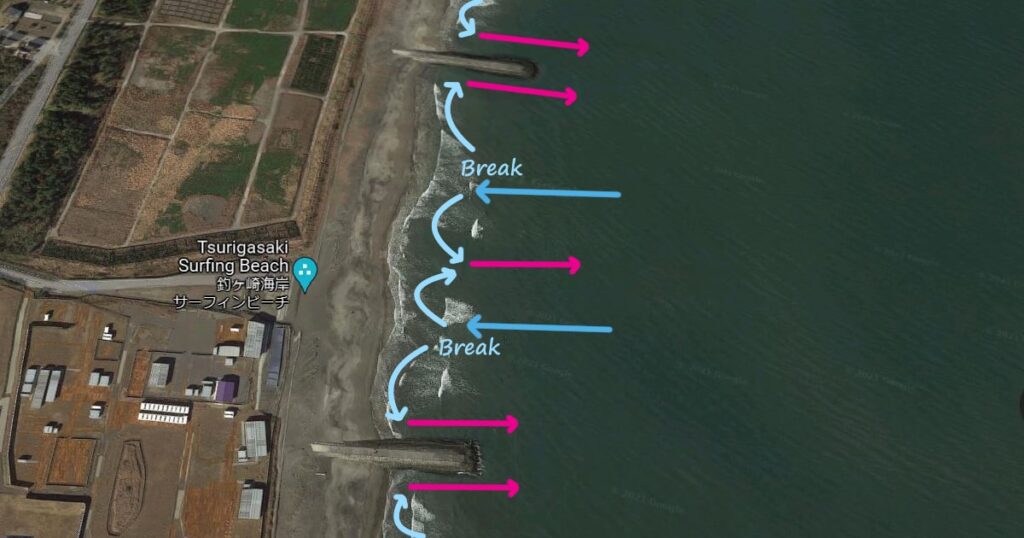
The waves coming from offshore break white. After the break, it hits the shore, turns sideways, and goes offshore along the embankment. The speed of this Rip current is very fast. Surfers who know nothing will be very surprised.
There are many similar embankments on this coast of Japan. From time to time, beginners are swept offshore by this stream, unable to return and are dead.
The direction of the Rip current differs depending on the surf-in spot. If you ask a local surfer, they may tell you the current direction.
In the case of a beach break, the terrain changes as the sand on the seabed moves. Therefore, the position of the Rip current changes drastically. Let’s check in advance.
Example of how to find Rip current
・ Find a place where the coastline is uneven. Rip currents may occur in the concave parts.
- Depending on the location, it may occur in the convex part.
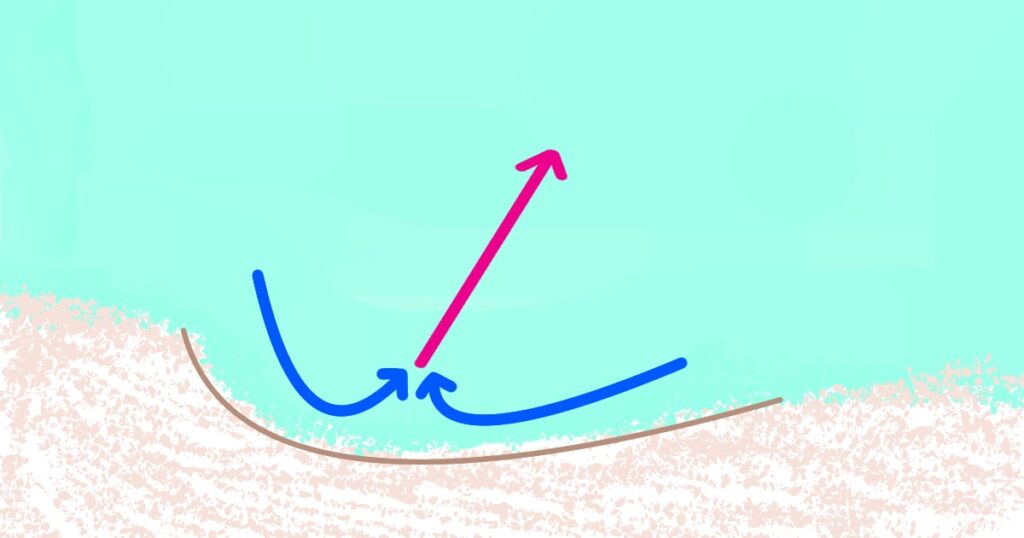
・ There is a possibility that a rip current has occurred in places where garbage is collected or the color of seawater is different. Seawater may become turbid as sand is washed offshore by rip currents.
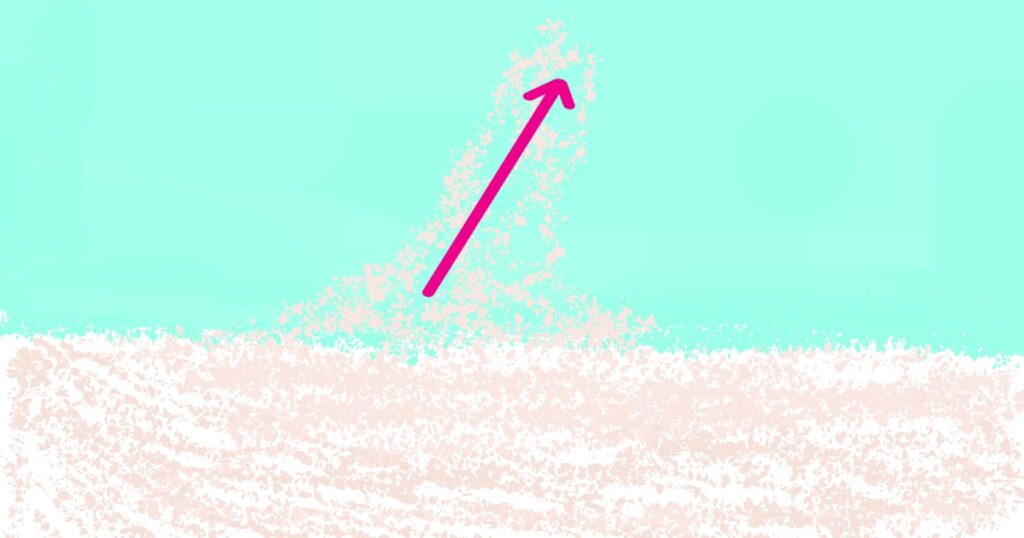
・ There is a possibility that a rip current has occurred in a place where the sea surface is rougher than the surrounding area.
・ There is a possibility that a rip current is occurring near the place where garbage is gathered on the coast.
What you should do to prevent you from being swept away by Rip current
Check the current before entering the sea
・ Ask local surfers and surfers who are familiar with the points about the current location.
・ Check the direction of the paddle of the surfer offshore. If everyone is paddling in the same direction, there may be a current.
・ Current is in a place where the topography of the seabed is deep. Waves are hard to break in deep places. Therefore, there may be a Rip current where the waves are not breaking. Also, dust may be floating or cloudy with wave bubbles.
Check the current even after entering the sea
・ When you enter the sea, check your position. Remember the location of trees and buildings on the shore. You can notice as soon as you are swept into the current.
・ If the current is strong, please go up to the shore while your physical strength remains. And stop surfing that day.
How to escape from Rip current
Rip current is a flow from the shore to the offshore. A common mistake for beginners is to paddle from offshore to shore against the rip current. They paddle to the shore in the shortest distance because of the fear of being swept away by the rip current. However, if you paddle against the rip current, it will not proceed. Eventually, you get tired, unable to paddle, and are washed away. At worst, you may die.
The way to escape from rip current is simple. Do not head straight to the shore, but paddle parallel to the shore. After paddle for a while, you will reach a place where there is no rip current. Then turn to the shore and paddle. Then you can go back to the shore.
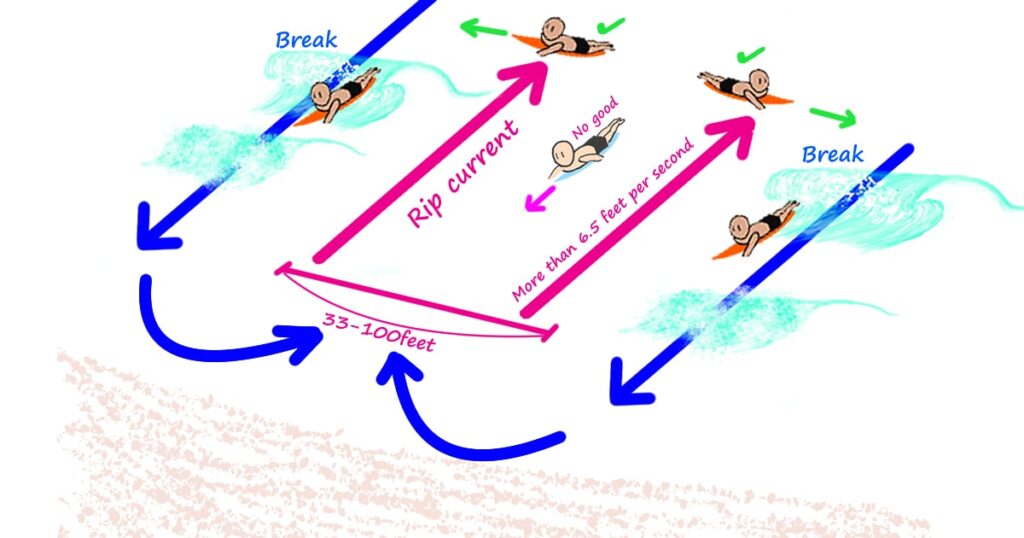
The blue surfboard surfer in the middle is paddling against the Rip current. He cannot return to the shore from here. He will eventually get tired and swept offshore, dying in the worst case.
Paddle sideways, like a surfer on an orange surfboard, to a place where there is no rip current. Probably, if you go 33 to 100 feet sideways, you will reach a place where there is no rip current. Then paddle towards the shore.
When it is swept by the rip current and cannot be returned
・ Believe that you will definitely come back alive.
・ Keep the surfboard. Surfboards are an important buoyancy.
・ In strong winds, lower your posture so that you will not receive the wind.
・ Check if the shore is approaching somewhere.
Depending on the flow of the tide, it may approach other shores.
・ If a rescue helicopter or fishing boat passes nearby, ask for help. However, it is difficult for rescue helicopters and fishing boats to find surfers floating on the surface of the sea. Sitting on the surfboard makes it a little easier to find. Also, make a loud voice and shake your arms exaggeratedly. Making it stand out even a little will increase your chances of being saved.

Thank you. I watch out for rip currents when surfing.
Views: 14054
